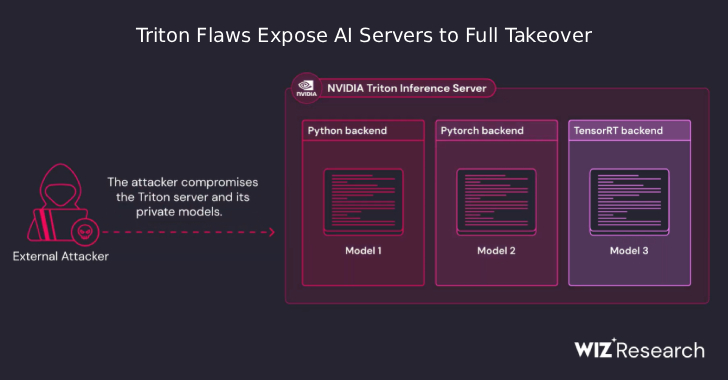
What is ERP/WMS Redeployment?
In the ever-evolving landscape of business technology, companies continually seek ways to optimize their operations, increase efficiency, and adapt to changing market demands. Enterprise Resource Planning (ERP) and Warehouse Management Systems (WMS) have been integral tools in achieving these goals. However, as businesses grow and evolve, so too must their software systems. This necessity has given rise to a concept known as ERP/WMS Redeployment, a strategic approach to revitalizing and enhancing these critical systems. In this article, we will delve into what ERP/WMS redeployment entails, its importance, and the steps involved in successfully implementing it.
Understanding ERP and WMS
Before delving into redeployment, it’s essential to understand the fundamental concepts of ERP and WMS systems.
Enterprise Resource Planning (ERP): ERP is a comprehensive software suite that integrates various business processes and functions into a single system. These processes may include finance, human resources, supply chain, procurement, manufacturing, and more. The primary goal of ERP is to streamline operations, improve data visibility, and facilitate data-driven decision-making across the organization.
Warehouse Management System (WMS): WMS is a specialized software application designed to optimize and manage warehouse operations. It includes functions such as inventory management, order fulfillment, picking, packing, and shipping. WMS systems are critical for ensuring the efficient flow of goods in and out of warehouses, distribution centers, and fulfillment centers.
The Need for ERP/WMS Redeployment
Over time, businesses grow, markets change, technology advances, and regulatory requirements evolve. As a result, the ERP and WMS systems that once served an organization well may no longer meet its current needs or potential for future growth. Here are some common reasons why businesses opt for ERP/WMS redeployment:
- Outdated Technology: As technology advances, legacy ERP/WMS systems may become outdated and unable to support modern business processes or integrate with newer technologies.
- Business Growth: Rapid business expansion often necessitates the scalability of systems to accommodate increased transaction volumes, multiple locations, or additional product lines.
- Efficiency Improvements: Redeploying ERP/WMS systems can help improve operational efficiency, reduce manual processes, and enhance automation.
- Compliance and Regulation: Changing regulatory requirements may demand updates to ERP/WMS systems to ensure compliance with new laws and standards.
- Integration: In a world where integration with third-party applications and systems is increasingly critical, redeploying ERP/WMS can help streamline data flows and ensure better interoperability.
- Cost Reduction: Older systems can be expensive to maintain and may not offer cost-effective solutions for evolving business needs.
- Enhanced Reporting and Analytics: Modern ERP/WMS systems offer advanced reporting and analytics capabilities, enabling organizations to make data-driven decisions more effectively.
Key Steps in ERP/WMS Redeployment
The process of redeploying ERP/WMS systems is complex and requires careful planning, execution, and post-deployment support. Here are the key steps involved:
- Assessment and Planning:
Current System Evaluation: Begin by assessing the current state of your ERP/WMS systems. Identify pain points, bottlenecks, and areas that require improvement.
Business Requirements Analysis: Work closely with stakeholders to define your organization’s current and future requirements. This step is crucial in shaping the redeployment strategy.
Selecting the Right Solution: Determine whether you need to upgrade your existing system or migrate to a new one. Make sure the chosen solution aligns with your business objectives.
Budgeting: Develop a detailed budget that includes not only the redeployment costs but also any potential hidden expenses that might arise during the process.
- Data Migration and Cleansing:
Data Extraction: Extract data from the old ERP/WMS system while ensuring data integrity.
Data Cleansing: Cleanse and transform the data to ensure accuracy and consistency. This step is crucial for a smooth transition.
Data Migration: Migrate the cleansed data to the new system or upgraded environment.
- Configuration and Customization:
System Configuration: Configure the new ERP/WMS system to align with your organization’s processes and requirements. This step may involve setting up workflows, defining roles and permissions, and customizing forms.
Integration: Integrate the ERP/WMS system with other applications, such as CRM software, e-commerce platforms, or third-party logistics systems.
- Testing and Quality Assurance:
Unit Testing: Conduct unit testing to ensure that individual components and modules work correctly.
Integration Testing: Test the entire system to ensure that all components function cohesively.
User Acceptance Testing (UAT): Involve end-users in testing to validate that the system meets their needs and is user-friendly.
- Training and Change Management:
User Training: Provide comprehensive training to end-users to ensure they can effectively operate the new ERP/WMS system.
Change Management: Implement strategies to manage and ease the transition for employees, who may resist change initially.
- Deployment and Go-Live:
Phased Rollout: Consider a phased rollout to minimize disruptions. Start with a small group of users and gradually expand to the entire organization.
Monitoring and Support: Provide post-deployment support to address any issues or challenges that may arise during the initial implementation.
- Performance Monitoring and Optimization:
Continuously monitor the performance of the redeployed ERP/WMS system and gather feedback from users.
Make necessary adjustments and optimizations based on user feedback and changing business requirements.
- Documentation and Knowledge Transfer:
Document the new system’s configuration, processes, and procedures to ensure that knowledge is transferred effectively within the organization. - Post-Deployment Evaluation:
Conduct a post-deployment evaluation to assess the success of the redeployment project and identify areas for improvement. - Ongoing Maintenance and Upgrades:
Regularly update and maintain the ERP/WMS system to stay current with technology advancements and business needs.
Benefits of ERP/WMS Redeployment
ERP/WMS redeployment can deliver numerous benefits to organizations willing to invest time and resources in the process. Some of these benefits include:
- Improved Efficiency: Redeployment often streamlines processes, reduces manual tasks, and enhances automation, leading to increased efficiency and productivity.
- Enhanced Data Visibility: Modern ERP/WMS systems offer better data visibility, enabling organizations to make more informed decisions.
- Scalability: Redeployed systems can easily adapt to the growing needs of the organization, accommodating increased transactions and business expansion.
- Cost Savings: Although redeployment involves initial costs, it can lead to long-term cost savings through improved efficiency, reduced maintenance expenses, and lower risks of downtime.
- Compliance: Organizations can ensure compliance with changing regulations and standards by updating their ERP/WMS systems.
- Better Reporting and Analytics: Advanced reporting and analytics capabilities enable organizations to gain deeper insights into their operations and customer behaviors.
- Competitive Advantage: Modern ERP/WMS systems can provide a competitive advantage by enabling quicker response to market changes and customer demands.
Challenges and Considerations
While ERP/WMS redeployment offers substantial benefits, it also comes with challenges and considerations that organizations must address:
- Data Security: Data migration and storage must be handled with utmost care to ensure data security and privacy.
- Integration Complexity: Integrating the redeployed system with other applications can be complex and require careful planning.
- Change Resistance: Employees may resist changes to their familiar systems and workflows, necessitating effective change management strategies.
- Downtime Risk: Redeployment can result in system downtime, which can disrupt operations. Minimizing downtime should be a priority.
- Vendor and Technology Selection: Choosing the right vendor and technology for the redeployment is crucial for long-term success.
- Customization vs. Standardization: Deciding between system customization and standardization can be challenging and depends on the organization’s unique needs.
Conclusion
ERP/WMS redeployment is a strategic approach to revitalizing and enhancing critical business systems in response to changing needs and technological advancements. By carefully planning, executing, and supporting the redeployment process, organizations can unlock numerous benefits, including improved efficiency, enhanced data visibility, scalability, and cost savings. However, redeployment is not without its challenges, and organizations must address these challenges through effective planning and management. In an era of rapid technological change, ERP/WMS redeployment is a powerful tool that can help businesses stay competitive and agile in a dynamic marketplace.
Contact Cyber Defense Advisors to learn more about our ERP/WMS Redeployment solutions.





